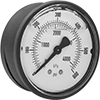Filter by
Connection Location
Dial Type
For Use With
Scale Type
Pressure Numeric Increments
Measurement Unit
Graduations
Fitting Connection
Connection Material
Accuracy Scale
Export Control Classification Number (ECCN)
DFARS Specialty Metals
About Pressure Gauges
More

















































